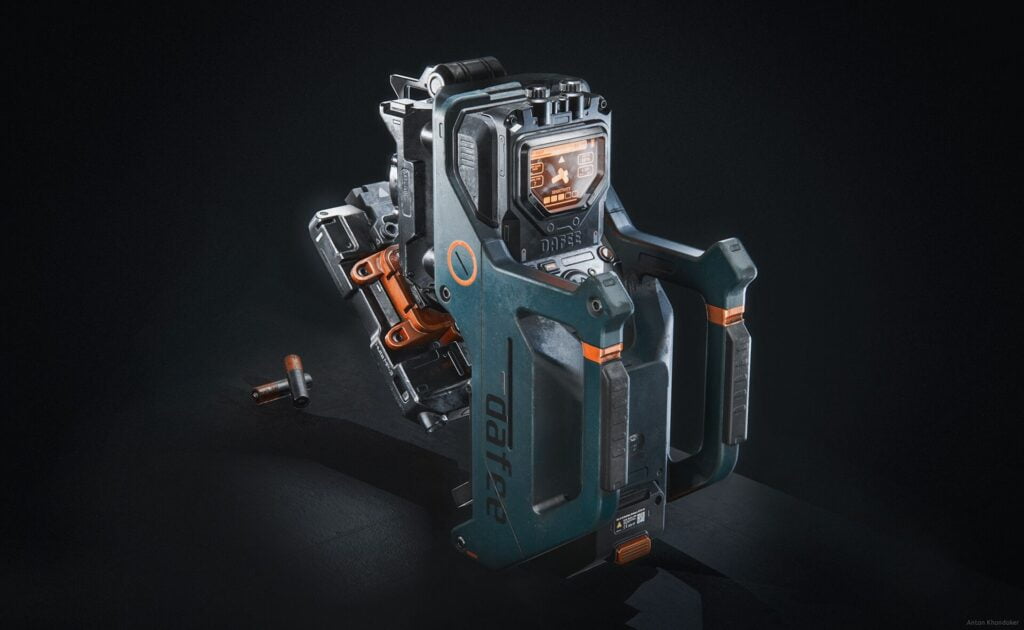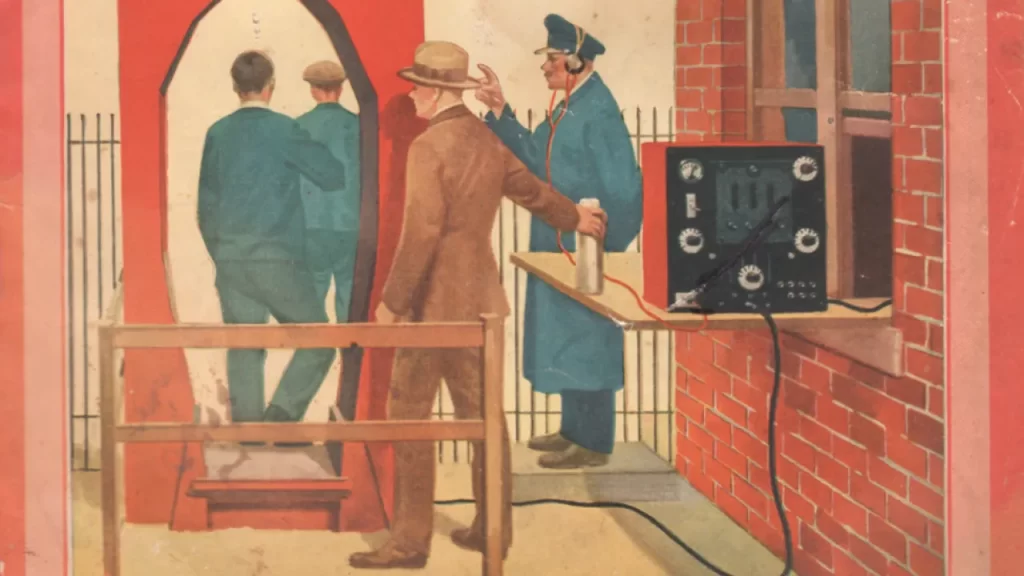Contents
How Do Metal Detectors Work? – While metal detection systems have their vulnerabilities and pursue an unquestionably one-dimensional approach to passenger screening, if you choose the right metal detector and work within its limitations, you’ll get significantly enhanced levels of protection at a very reasonable price.
How Do Metal Detectors Work: First Use Case
Important to remember is that metal detectors were first used in the airline industry to deter or detect hijackers who attempted to carry handguns or grenades onto ‘planes. As a result those early systems, as well as some lower cost units still available now, exhibit certain weaknesses. For a start, in the 1960s, firearms were constructed of ferrous metals, not of those metals that can’t be magnetised.
The high metal content meant passive sensors like magnetometers were more than capable of detecting weapons. But passive metal detectors are unable to detect modern lightweight weapons made of non-ferrous metal.
Along with their inability to handle non-ferrous metals, magnetometers use the earth’s magnetic field as a baseline threshold when seeking metal objects. This means that local interference, be it geology or building construction, can have a significant impact on operation.
When considering how do metal detectors work, bear in mind that active metal detectors work differently from magnetometers, using a loop to create their own local magnetic fields (at about 1 gauss) and then detecting metal objects that pass through the field. Active units are more effective than passives because their magnetic fields are stronger and so less likely to be disturbed by interference.

Such interference could see sensitivity turned down in order to get useful function once a unit is installed on a challenging site. Security managers should ensure they specify active metal detectors whenever they can.
Some types of interference may also impact on active metal detectors and the impact on operation will vary from site to site. Almost any strong EMI or RFI field can have an impact on metal detection circuitry. Sources can include fluorescent lights, baggage X-ray machines, electric motors, high power switches, automatic doors, PA systems or strong RFI sources. Nearby plant equipment or the steel construction of a terminal can also have an impact on performance.
In high security locations, X-ray machines for baggage screening are invariably located adjacent to metal detection units and the 2 are by no means compatible. Any object containing metal, especially the large buckles on carry-on luggage, the components of laptop computers, the frames of children’s prams etc, may cause problems when it passes too near a metal detector.
While manufacturers of most metal detection units work hard to use digital signal processing and clever circuit design to defeat stray electromagnetic noise, some design types are inherently more effective when battling EMI. Elliptical-coil designs are among the more efficient types. Talk to colleagues whose operations employ metal detectors and get their opinion on what works best.
How Do Metal Detectors Work: Tuning
Another issue to consider is operating frequency. All metal detectors don’t operate at the same frequency and nor should they if a metal detection station is to work effectively. Active portals generally run at frequencies between 90Hz and 25kHz. Those lower frequencies have some advantages as well as a few weaknesses.
For a start, units with frequencies below 500Hz are ideal for detection of poor conducting metals like iron and steel. Iron isn’t a particularly common metal these days, but stainless steel knives, blades and gun parts are widely used.
The advantage of low frequency gear is that it largely ignores distractions like pocket change, foil in cigarette and chewing gum packaging, watches, jewellery and belt buckles. Marked increases in sensitivity at major airports since 9-11 are largely the result of scanning stations using higher frequencies so as to pick up smaller metal objects – including small carried metal items like those mentioned above.
Handheld
Handheld detectors can be used by security staff to do topical scans of passengers should they fail a walk-through. These use much higher frequencies – from 100kHz to about 1MHz.
At these higher frequencies handhelds will pick up almost all-metal objects and as they’re active, these detection devices will also latch onto non-ferrous metals. Their high frequency and high sensitivity to metal is what makes handhelds so annoying to people wearing metal shoe buckles while making these devices indispensable to security teams.
How do walk through metal detectors work?
Until 9-11 an acceptable false alarm rate for screening airline passengers was around 15 per cent. The acceptable false alarm rate varies from site to site and security managers using metal detection equipment on sites like stadiums with massive traffic flows may be forced to do no more than random checks on individuals who may look suspicious, or simply undertake to check every 10th person.
While it’s obvious that a metal detector should be sensitive enough to pick up the magnetic signature of a handgun or a knife, the variety and nature of weapons used – box cutters were employed 9-11 – means de-sensitising the system, though selection of lower frequencies is a risk.
Any setting that fails to pick up even the smallest knives, or knives with the least metal content, can’t be dialled in without some serious consideration. If the security manager and detection station supervisors are in any doubt about the ability of the system to detect those items that a detailed risk management process has suggested are a threat to their operation then they should conduct comprehensive walk tests until they’re certain of the system’s capabilities.
Plastic Weapons
Ordinary plastics cannot be detected by metal detectors or x-ray machines. However, by incorporating new additives during manufacturing, broken pieces or fragments of plastic materials can be detected by a metal detector before getting mixed in with food products.
Along with any walk testing done to establish benchmarks for system performance, the recalibration of metal detectors should be carried out regularly using a standard test object that never varies. During the 90s, the FAA designated a test firearm that comprised about 3.7 ounces of stainless steel. Anyone who has travelled more recently would attest to the fact metal detector sensitivities are now so high they’ll pick up metal objects much smaller than this.
How Do Metal Detectors Work: Sensitivity
High sensitivity has one major flow on effect. As pointed out earlier, unless there are sufficient security staff on duty and equipped to undertake hand-held secondary searches, the metal detection portal will become a bottleneck. That will be a serious challenge on any busy site.
Bear in mind, too, that there are new technologies available, including millimetre wave, and these need to be taken into account.
How Do Metal Detectors Work: Garrett PD 6500i
Specifications of Garrett PD 6500i Walk-Through Metal Detector include:
- 33 pinpoint zones to precisely identify multiple target locations from head to toe on the left, center and right sides of the body
- 21 standard programs for security application versatility
- Dual detection: with transmitters and receivers in each panel, the PD 6500i is the equivalent of two detectors in one. By scanning from both sides, the PD 6500i provides superior detection, uniformity and performance
- Advanced broadband detection technology provides superior target analysis, ferrous and non-ferrous weapons detection, discrimination and higher throughput
- Directional counter with 4 settings for counting (forward, reverse, subtract in reverse, and bi-directional)
- Superior versatility: selectable settings designed for airports, courthouses, prisons, schools, facilities, special events, mass transit, loss prevention and many other applications
- Networking ability: CMA provides networking, remote control, monitoring, data analysis and group management
- Meets IP55 standards for moisture and foreign matter protection
- Limited 24-month warranty: parts and labor
- Pacing lights at the entrance display universal wait and proceed symbols for traffic control.
Equipment on Show at SAGE Event
More stories at SEN and visit SAGE to see government security solutions.
how do metal detectors work how do metal detectors work how do metal detectors work how do metal detectors work how do metal detectors work











